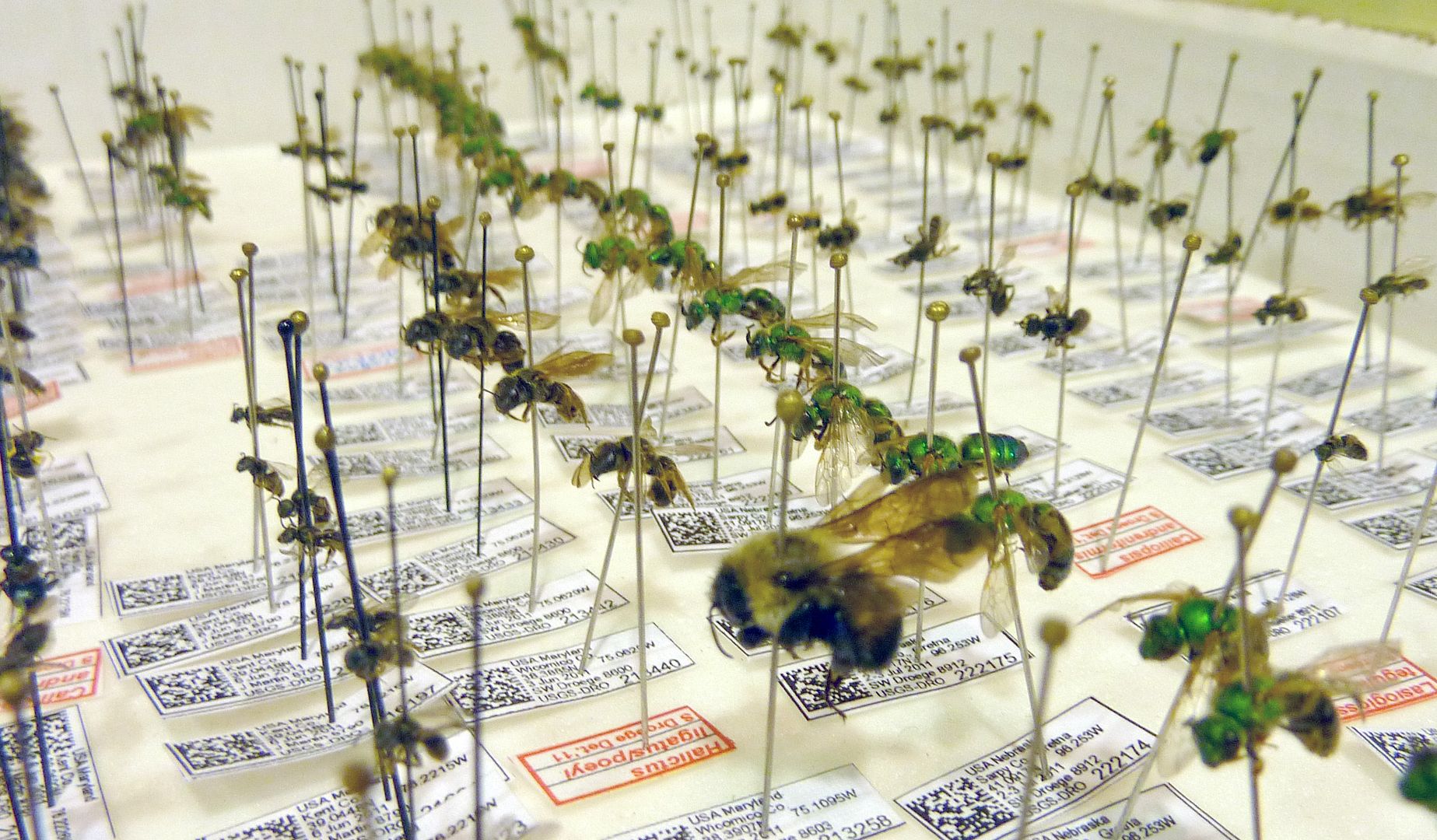Sorry for not blogging anything for the past week. Basically the weather here has been miserable and in fact it's snowing right now. Hopefully the following post makes it up to you all.
I spent the day at the Mt. Cuba Center for their class on Native Bees. I can't recommend courses at the Mt. Cuba Center highly enough. That place should be a national treasure. That said though I felt today's course could have been structured slightly better. The first half was done well enough the instructor started going into common bee genera and it wasn't very apparent that they were in any logical order, or at least as logical as it should have been. The real issue I think was that the class and material he usually gives takes 5 days to complete, and he had to sum it all up in 3 hours.
He didn't go over different nesting type or habitats. Most surprisingly of all, he suggested that it might be bad to put out mason bee nest blocks because it helps the spread of an two invasive species. Putting out the nesting blocks is like a double edged sword. He didn't really go into it as much as I'd have liked. Though personally I'd need the 5 day version of the course to learn all the taxonomy.
What he did cover was excellent and mostly focused on how flower shape and color have shaped their pollinator bee counterparts. He mentioned studies that show getting rid of the pollinator doesn't cause the plant to vanish typically, but getting rid of the plant can get cause the specialist bee to vanish.
North American is not a very species rich continent, but when it comes to bees, we're one of the top continents in the world. Because of these specialist relationships with plants, especially in the south west where mountain ranges keep lots of arid micro-habitats isolated. The diversity of plant species there have greatly increased the diversity of bees who pollinate them.
The focus on the class was on species found in Maryland and Delaware area. I noted though some specimens were collected from New Jersey, and New York.
Dissecting scopes and microscopes were on hand to view these up close. All the species present were common enough that anyone attending the class was allowed to take some home.
Despite a lot of these being repeats of the same species, there certainly are a lot of them here. Of the 10 or so trays (medium sized pizza boxes with foam in the bottom) there were about 75 species represented.
One species not prescient went back to the association with specific plants. There's an alien species of Centaurea (Bachelor Buttons) which is spreading along rail road tracks and highway mediums. An introduced pollinator is spreading along with it, but the trouble is it's a carpenter bee without a preference for soft wood. Wooden houses where the plant and bee are present get riddled with holes on the outside more severely than any of our native and introduced carpenter bees. It just goes to show why native plants are important. What's more, it's neat to think this bee can be controlled simply by weeding out the introduced alien plants.








